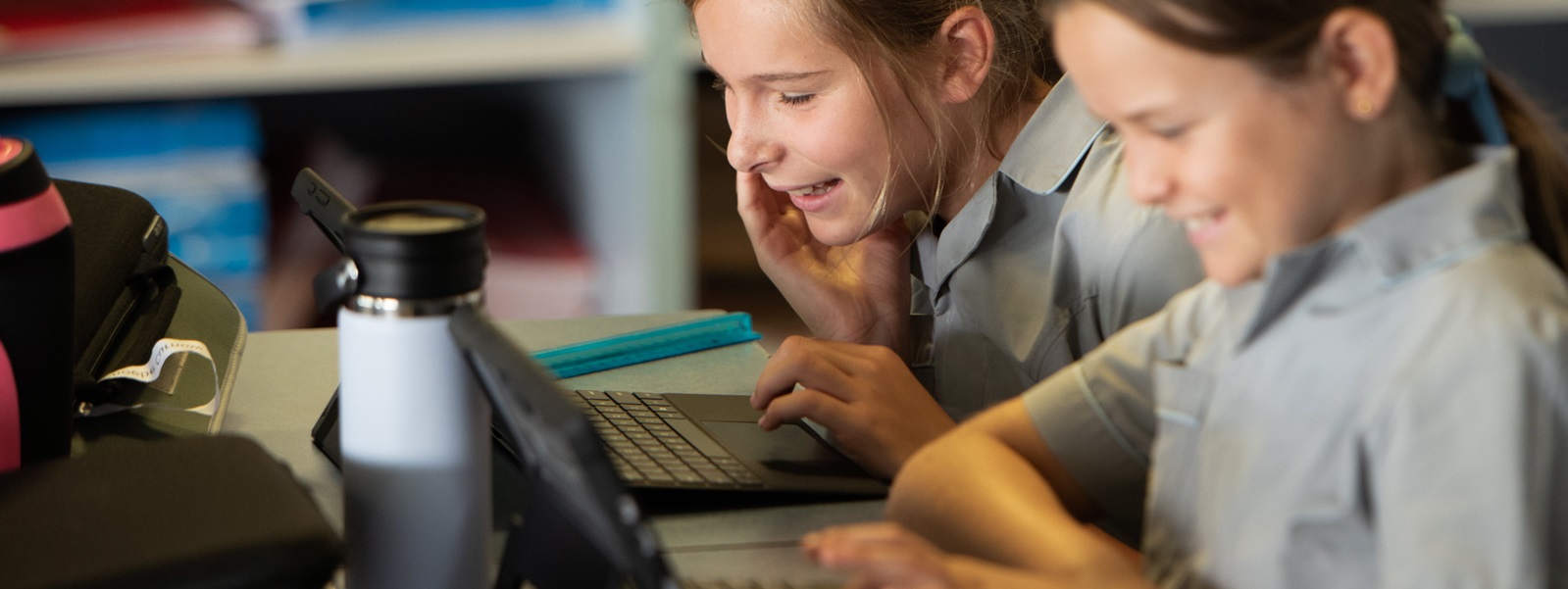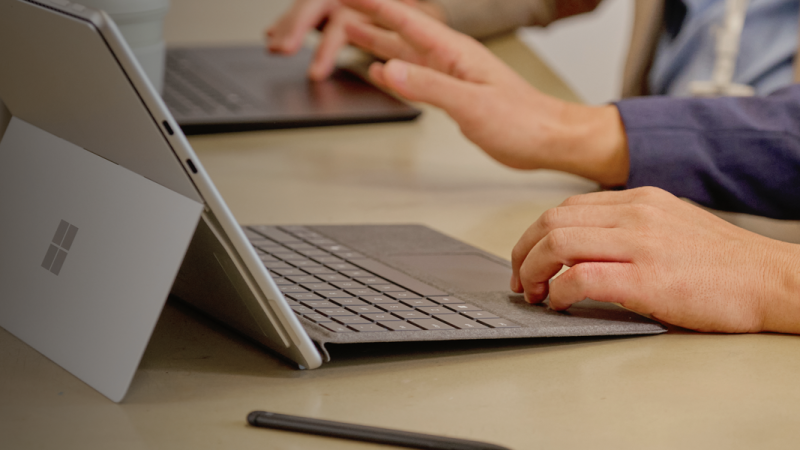
From Paper to Ink; moving from paper-based learning to a digital learning environment

St Hilda’s Anglican School for Girls has been educating young women for the past 125 years. A school steeped in academic achievement and tradition, its digital transformation was in its infancy when the recent events of COVID-19 saw it rapidly gain momentum overnight.
Prior to COVID-19, the school’s device structure consisted of Computers on Wheels (COWs) that were on loan throughout the school. With consistently high academic results, the school was taking a cautious approach to its transformation of pedagogy.
With the success of its hybrid learning model during COVID, the School knew it couldn’t return to a non-one-to-one device environment. And with continued uncertainty as WA opened its borders, changes had to be made and fast. St Hilda’s had the perfect opportunity to invest in identifying the very best device structure to address the teaching and learning needs of the students and teachers in the school.
When choosing the devices for St Hilda’s, they reached out to Rhiannon Herbert, a Surface specialist with Microsoft. She supported the school by identifying the devices that were suitable for the ages and pedagogical needs of the students. With collaboration, digital inking and a range of device features and functionality as priority, Surface Gos, Pros and Books were ordered for the students in years 1 to 12. Moving forward, as the Surface Books are being removed from the Surface range, the newer model of the Studio Laptop will be used.

Over 700 devices were rolled out in less than three months, in preparation for 2022. However, it was the transformation of teaching and learning that was the most remarkable aspect of this change program.
One of the strengths of the roll out was the support from Microsoft in teacher training. The school incorporated the full suite of Microsoft programs within a short time and became a Surface Lighthouse / Office 365 school. Thankfully with the help of the Director of Learning Reimagined, Nicole Adams, and the Learning Architects, Astor Dobson and Lara Clarke, the school was able to support staff in adapting their teaching and learning swiftly and efficiently.
“It felt like overnight, our staff had to not only learn how to use the tools but to use them in a virtual learning environment; it was a whole new skill set,” said Nicole Adams, Director of Learning Reimagined.
Staff devices were also of consideration. Being conscious of the demands placed on the devices; wirelessly connected to screens, while on a Microsoft Teams video call, sharing a screen and engaging with teaching and learning tools all at once, saw large stress placed on the device. The Surface Book has allowed the staff to maintain the above as a seamless learning environment.
The roll out of devices needed to be supportive and sustainable in a holistic way, including infrastructure, support, network capacity and adoption. Increased capacity within network systems was needed in order to support the network traffic. The IT team was restructured to ensure there was space for innovation, projects and support for teaching and learning. With a priority in automation of processes and capturing the endless possibilities within the Power Platform, key skills, knowledge and understandings needed to be developed and harnessed within the IT Team. Ongoing work continues in this innovative space with paper-based processes like leave forms, professional learning requests, and subscription renewals being automated through Approvals in Teams. The visualisation of student academic, pastoral, and learner profiling through Power BI as well as purpose-built apps within the Power Platform continue to be refined.

Having all staff and students on the same platform created learning environments that supported the collaborative pedagogy that the school values. Each room is fitted with wireless projection so that any staff member or student can lead the learning. All students can access cloud-based resources, collaborate in real time as well as interact using traditional keyboard input or via stylus; all which contribute to the digital transformation of teaching and learning. But the transformation did not happen overnight.
To support sustained adoption and engagement in new pedagogical opportunities enabled by inking opportunities, the school created new Learning Architect roles to specifically work with staff in developing digital practice. These staff, Astor Dobson and Lara Clarke, work with staff in small groups or in one-on-one situations to support them in maximising the use of their new Surface products.
“We went through the process of looking at a professional learning model that went beyond teaching staff how to use the tools and developed a whole series of how-to videos that focused on the features and functionality through a pedagogical lens. The learning had to focus on the pedagogy the devices, digital pens and tools enabled,” said Nicole Adams.
As a result, staff are continuing to use Microsoft Teams post remote learning as a classroom hub supported by the features within OneNote which allows students to take notes at a whole new pace. Students and teachers enjoy the interactive features in PowerPoint Live and are using the ability to highlight PowerPoint presentations and annotate additional comments on slides. Microsoft Stream is used to capture learning and share with peers and teachers, Forms for formative and summative assessment, and Sway for digital storytelling in the youngest of years. One specific tool for collaboration used School-wide is SharePoint.
A student and staff SharePoint site was created for each team and department. By linking this SharePoint directly to the Teams learning environment, teachers were able to create a ‘source of truth’ document library. This library was shared amongst all students meaning that staff maintained one set of documents which all students could benefit from whether in that class or not. With each department having a purposeful space, collaboration has never been more prevalent. Operational staff also had their own collaborative space to maintain business as usual, even when lockdowns, staff isolation absenteeism and new work from home options saw most staff no longer in the physical office. As the School’s parent body is issued with an @sthildas tenant username, SharePoint provided the highest level of accessibility and functionality while its significant permission settings ensured a high level of document security.
The new flexibility given by Office 365 has allowed students to work on projects in new and exciting ways. Students are enjoying choice in how they demonstrate their learning and have embraced the true range of PowerPoint capabilities and other media options on their Surface devices. Student agency is a key part of the digital pedagogy framework teachers work from, empowering students to develop their decision making and independent learning skills. Students can identify which tool is most appropriate to use to align to the requirements of the task. These new forms of presenting work have increased learning and engagement on many topics, and it has also given many girls a great sense of independence as it allows them to present their learning in ways that play to their strengths.
“It has been brilliant to see the girls take ownership of their learning and initiatives. We have seen girls utilise the collaborative components of the tools to create study groups, work on group assignments at home, or even to just remind each other what was for homework that night,” said Adams
It is remarkable what the staff at St Hilda’s have achieved in such a short period. And while they are well and truly on their digital transformation journey; they’re only just getting started.
Categorised in: Education, Industry
This post was written by Microsoft Australia









